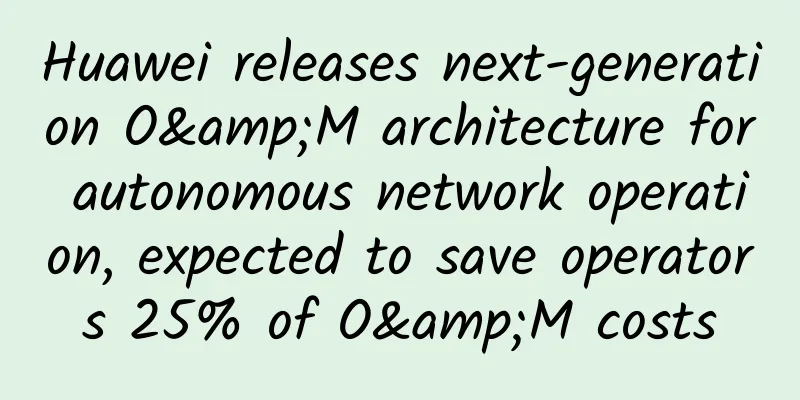With this subnet division summary, I know all about subnet mask design~

|
1. Subnet Division Subnet division is actually the process of designing subnet masks. The subnet mask is mainly used to distinguish the network ID and host ID in the IP address. It is used to shield a part of the IP address and separate the network ID and host ID from the IP address. The subnet mask is a value composed of 4 decimal numbers separated by ".", such as 255.255.255.0. If it is written in binary form: 11111111.11111111.11111111.000000000, where the "1" bit separates the network ID, and the "0" bit separates the host ID, that is, the network number is obtained by performing an "AND" logical operation on the IP address and the subnet mask. For example, assuming the IP address is 192.160.4.1 and the subnet mask is 255.255.255.0, the network ID is 192.160.4.0 and the host ID is 0.0.0.1. If the computer network IDs are different, it means that they are not in the same physical subnet and need to be forwarded through a router to exchange data. Each class of address has a default subnet mask: 255.0.0.0 for Class A, 255.255.0.0 for Class B, and 255.255.255.0 for Class C. In addition to the above representation method, it can also be represented by the number of "1" bits in the subnet mask. By default, class A addresses are 8 bits, class B addresses are 16 bits, and class C addresses are 24 bits. For example, an address of Class A is 12.10.10.3/8. The last "8" here indicates that the subnet mask of the address is 8 bits, and 199.42.26.0/28 means that the subnet mask of the network 199.42.26.0 has 28 bits. If you want to create subnets on a network, you add some bits to the default subnet mask, which reduces the number of bits used for host addresses. The number of bits added to the mask determines the subnets that can be configured. Thus, in a subnetted network, each address consists of a network address, a subnet bit, and a host address. 2. Address Classification 1. Classful address division
2. Private network address division The private network addresses mainly used in the current network are:
3. Same network segment Here, let me tell you what exactly is considered the same network segment. In order to be in the same network segment, the network ID must be the same, so how to calculate the network ID? The network identification algorithms for various types of IP are different.
The algorithm just needs to AND each digit of the IP and subnet mask. AND method: 0 and 1 = 0 and 0 = 0 and 1 = 1 Such as: And192.168.0.1, 255.255.255.0, first convert to binary, and then AND each bit of IP11000000.10101000.00000000.00000001 Subnet mask 111111111.111111111.11111111.00000000 The AND result is 11000000.10101000.00000000.00000000 Convert to decimal 192.168.0.0, which is the network ID. Then reverse the subnet mask, which is 00000000.00000000.00000000.11111111, and IPAND to get the result 00000000.00000000.00000000.00000001, convert to decimal, which is 0.0.0.1, and 0.0.0.1 is the host ID. To be in the same network segment, the network ID must be the same. Let's take a look at this Class B IP that has been changed to the default subnet mask. For example, IP: 188.188.0.111, 188.188.5.222, subnet mask is set to 255.255.254.0, are they in the same network segment? First convert these into binary
AND respectively, we get
The network identifiers are different (see the digit 1 after 255.255.254.0 is converted into binary, so you can see the difference), that is, they are not in the same network segment. You know how to determine whether they are in the same network segment, right? Now, let's do something practical. A company has 530 computers forming a peer-to-peer LAN. What are the most appropriate subnet mask and IP settings? I won't talk about the subnet mask. The result calculated earlier is 11111111.11111111.11111100.00000000, which is 255.255.252.0 4. Class B Address Select a Class B IP segment, here we choose 188.188.xx. In this way, the first two segments of the IP are determined. The key is to determine the third segment. As long as the network identifier is the same, it will be fine. Let's first determine the network number. (We match the 1 in the subnet mask with the ? in the IP, and the 0 with the *, as follows:)
Network ID 10111100.10111100.??????00.00000000 00000010, 00000011, 000000010, 00000011, converted to decimal, are 1, 2, and 3 respectively. In this way, the third segment of the IP is also determined, and the IP address is 10111100.10111100.000000**.********. There are 530 computers in total. The last segment of the IP from 1 to 254 can be divided into 254 computers, 530/254=2.086. Using the carry 1 method, we get the integer 3. In this way, we have determined that the third segment of the IP must be divided into three different numbers, that is to say, fill the ** in 000000** with 1 and 0 three times, and the numbers are different each time. As for what to fill in, it is up to us, such as 00000001, 00000010, 00000011, converted to decimal, are 1, 2, and 3 respectively. In this way, the third segment is also determined, and the IP address can be 10111100.10111100.000000**.******** Divide it into 188.188.1.y, 188.188.2.y, 188.188.3.y, fill in any number in the y place, as long as it is within the range of 1 to 254, and the IP addresses of these 530 computers are different. Some people may say that since the algorithm is so troublesome, just use Class A IP and Class A default subnet mask. But what I want to tell you is that since the number of hosts with Class A IP and Class A default subnet mask is too large, doing this is undoubtedly like looking for a needle in a haystack. If the LAN access volume is too frequent and too large at the same time, it will affect efficiency. Therefore, it is best to set the IP and subnet mask that suits you^_^ 3. Subnet Summary Subnetting can further divide IP addresses into smaller networks. If you want to divide an IP address into smaller networks, you need to move the host bits to the network bits, which is also called borrowing or renting bits. The number of host bits used determines how many subnets the IP is divided into, and the remaining number of host bits determines the number of hosts in each subnet after the division (host bits all "0" or all "1" are unusable, all "0" represents a subnet address, and all "1" represents a broadcast address) For example, divide the network segment 192.168.1.0/24 into four subnets The calculation method is:
From the above formula we can get:
After calculating the number of subnets and hosts, it is very simple to determine the starting and ending addresses of each subnet, that is, the subnet address and broadcast address. You can do this We have calculated that the number of IPs in each subnet is 64 (note that it is the number of IPs, not the number of available hosts). So we can determine that the interval between two adjacent subnets is 64. The initial subnet address starts with "0", so the next subnet is 0+64. And so on, we can get the starting address of each subnet:
The broadcast address is:
How to calculate the subnet address and broadcast address from a given address? You can do this. If the given address is 192.168.1.137/26, first convert the IP address to binary form. The mask is 26 bits. Count 26 bits from left to right and draw a line after the 26th bit. If all bits after the line are 0, it is the subnet address. If all bits after the line are 1, it is the broadcast address. Subnet aggregation is to aggregate multiple network segments into one network segment For example, to aggregate the five network segments 172.16.1.0/24, 172.16.4.0/24, 172.16.5.0/24, 172.16.7.0/24, and 172.16.9.0/24 into one, you can do this: Pick out the largest and the smallest IP address from these IP addresses, then convert the two different sets of numbers in the two IP addresses into binary form and compare them one by one, using vertical lines to distinguish the same and different ones. All the different bits, that is, all the bits after the vertical line, are filled with 0, and the obtained address is the network address of the summarized network segment, which is 172.16.0.0. Before aggregation, the mask of each IP is 24 bits, and after aggregation, the mask is 20 bits, that is, the bits before the vertical line are the number of bits in the mask. |
<<: Network Access Control-Network Address Translation
>>: 6 places that provide free certificates to upgrade your website to HTTPS for free
Recommend
Enterprises need to increase investment in mobile 5G fixed fiber networks
As the world continues to go wireless, it’s also ...
Huawei Cloud WeLink is launched to subvert your imagination of smart office
[[311668]] [51CTO.com original article] Huawei Cl...
V5.NET March Promotion: Hong Kong CN2 server limited 30% off, dual E5-2630L/32GB/1T SSD/10M monthly payment 625 yuan
V5.NET's promotional models this month are th...
A must-have for interviews! 15 classic questions about TCP protocol!
[[410649]] Preface TCP protocol is a must-know kn...
V5.NET new cloud server 30% off monthly payment from HK$42, Hong Kong physical server monthly payment from HK$385
V5.NET has announced the news of new cloud server...
IPv6 global penetration rate reaches 27%, 6G will be deployed in 2030
Recently, Latif Ladid, chairman of the National I...
HostXen: DIY cloud hosting available in Hong Kong, the United States, Japan, and Singapore, new user registration with coupons
HostXen is a DIY-configurable cloud server hostin...
HPE Aruba Networking Launches Enterprise-Grade Private 5G Network to Simplify Deployment of Dedicated Cellular Networks
HPE (NYSE: HPE ) today announced the launch of HP...
What is the global development situation of IPv6?
Statistics from authoritative foreign organizatio...
An article explains the principles of Docker network
Overview Docker native network is based on Linux ...
Quality, innovation and excellence, Ruijie Networks releases new products for general education in smart classrooms
On April 20, Ruijie Networks held an online launc...
Is there still room for wireless mesh networking in the enterprise?
【51CTO.com Quick Translation】Wireless mesh networ...
Istio configuration security: How to avoid misconfiguration
Istio is a powerful service mesh solution that pr...
Hosteons 5th Anniversary Double Traffic for All VPS Hosts, VPS Hosts Annual Payment of $16, 5 Data Centers in Los Angeles/Dallas
Hosteons is currently running a 5th anniversary p...
I don't know the router's address.
When we set up a wireless router, we need to ente...









